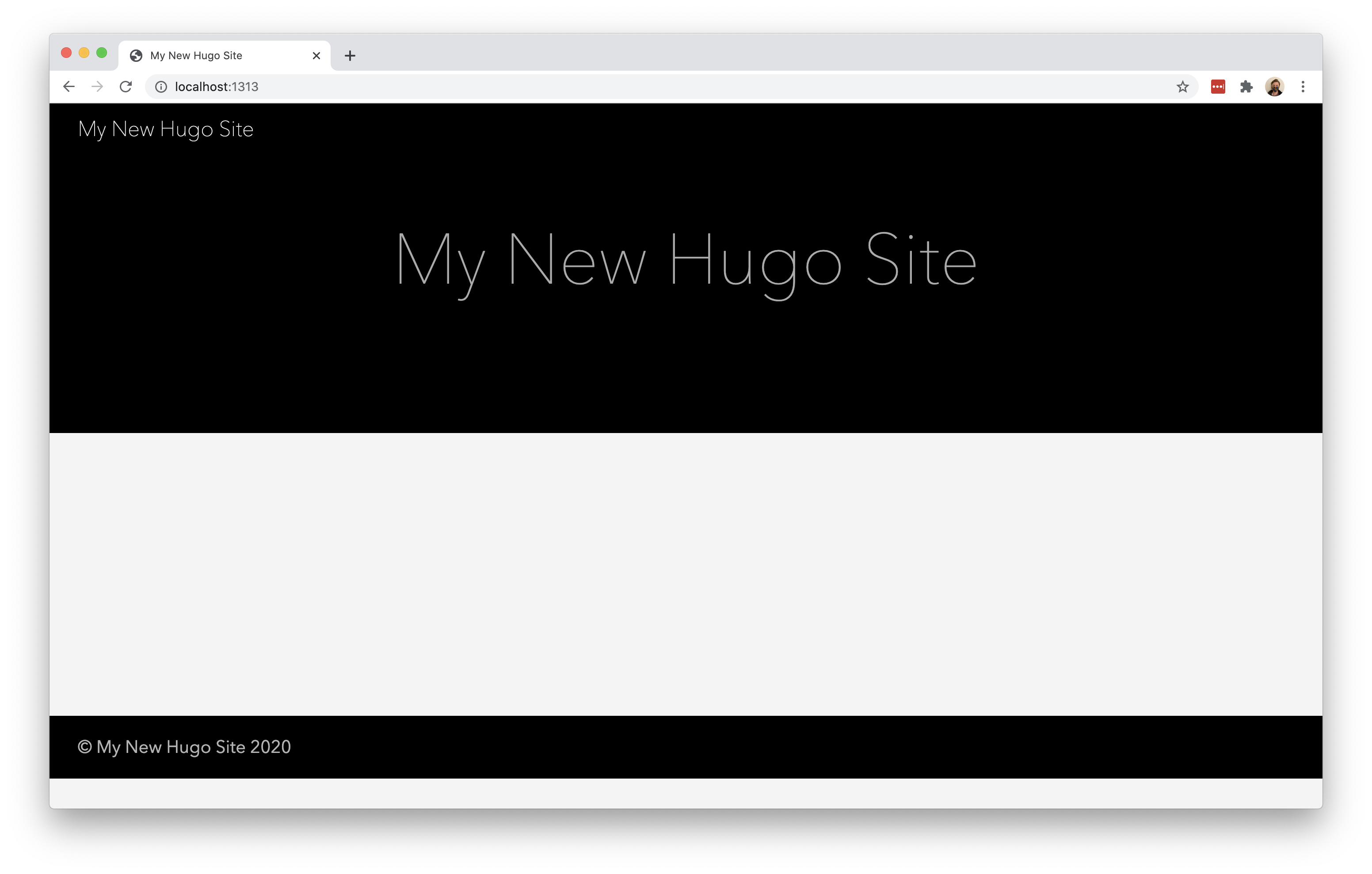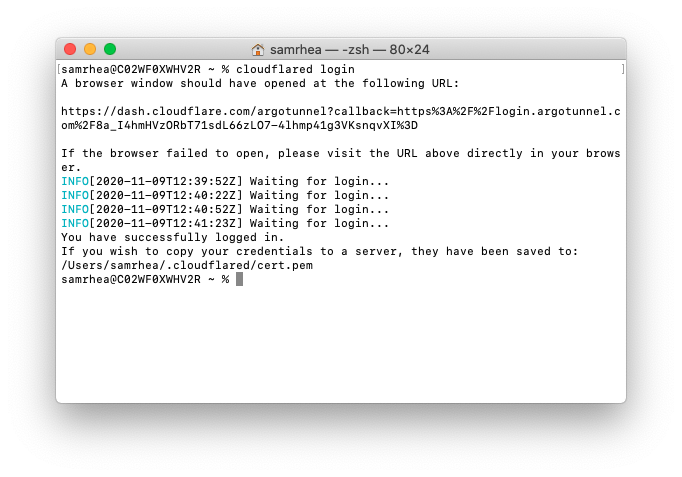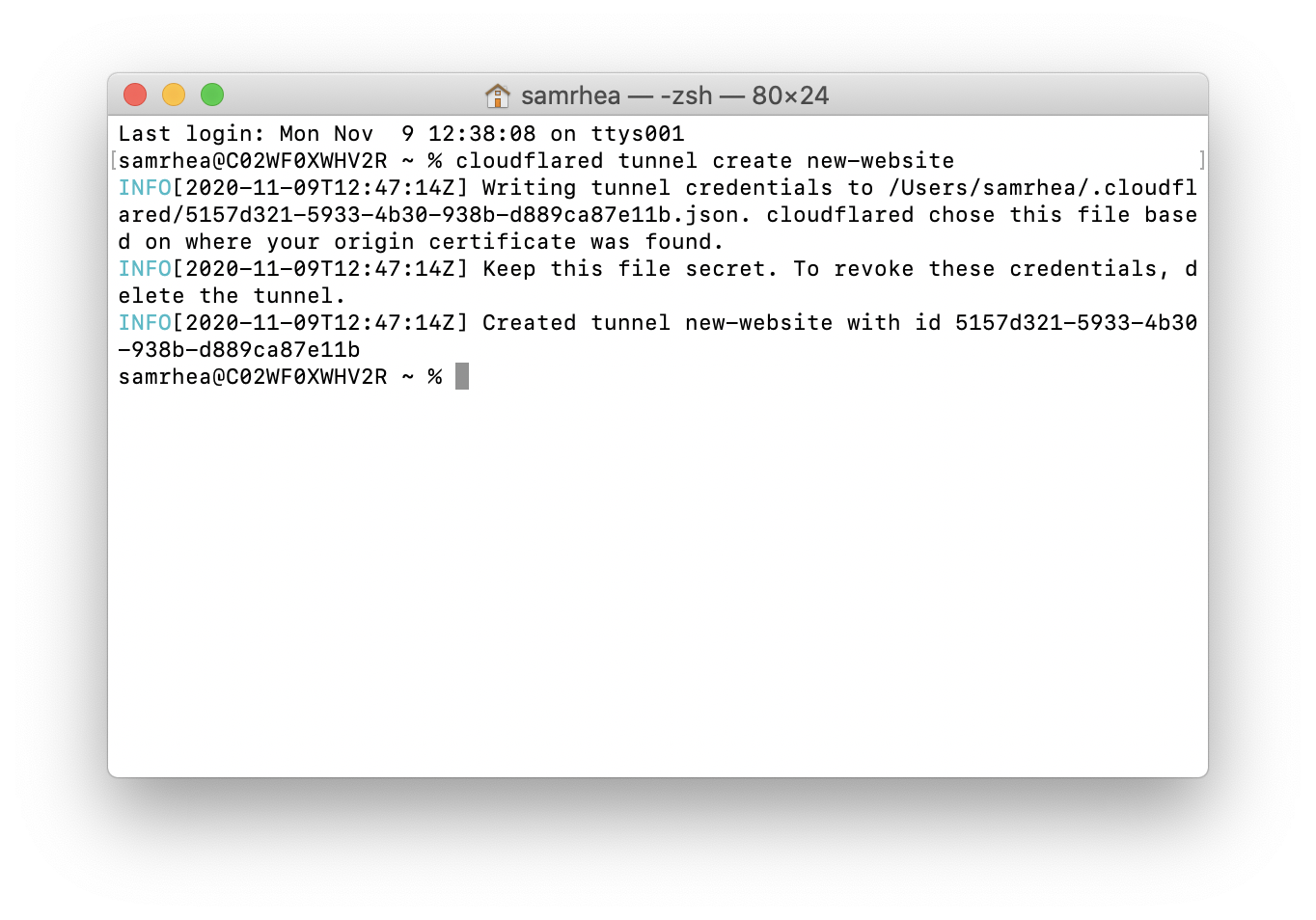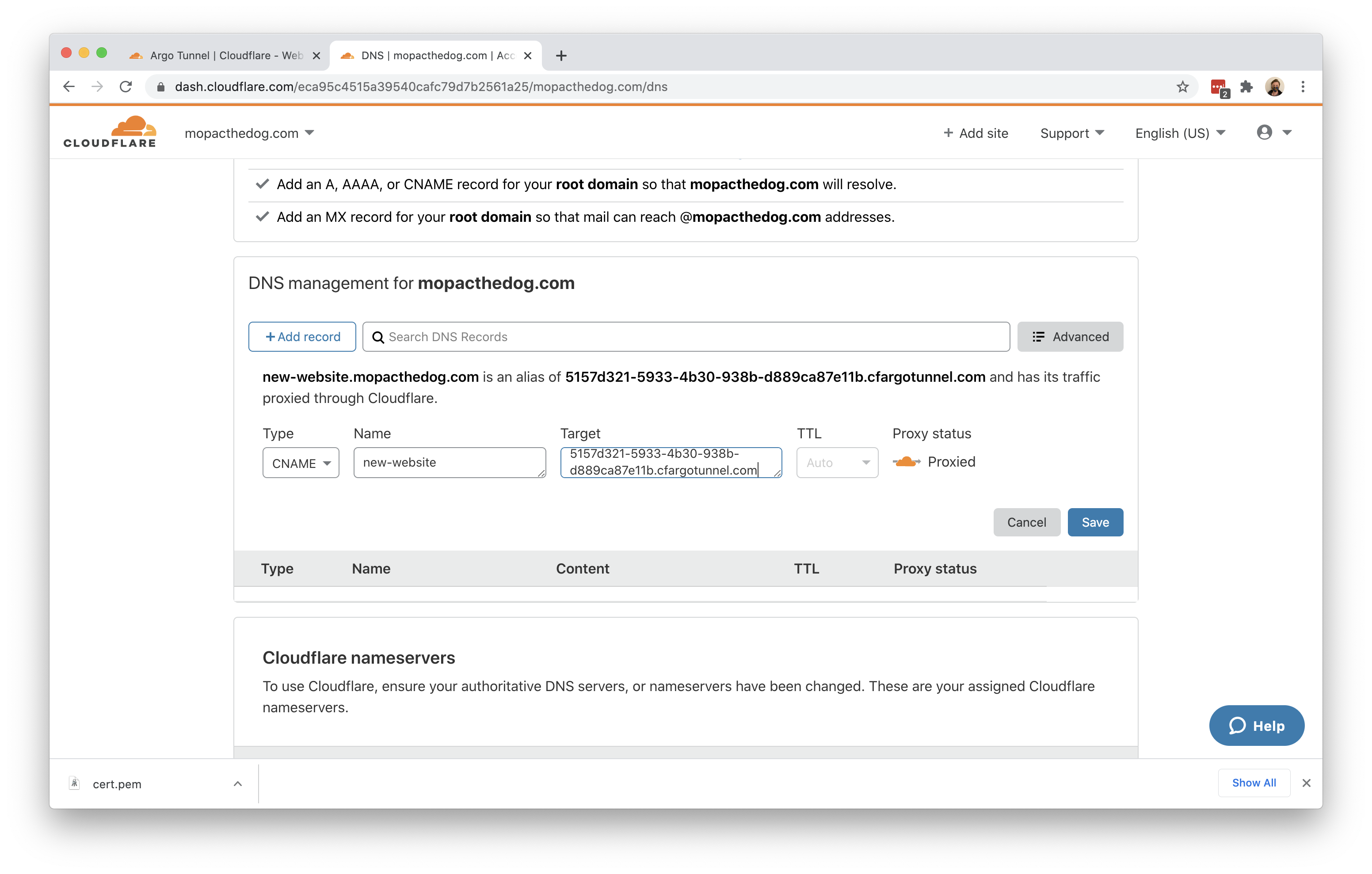Connect without long-lived API keys
You can use Cloudflare Tunnel to connect applications and servers to Cloudflare’s network without leaving sensitive API keys lingering in your environment. These applications can be both public-facing or protected by Cloudflare Access.
This tutorial covers how to:
- Start a secure, outbound-only, connection from a server to Cloudflare
- Keep that connection running after deleting the initial authentication file
- Give that application a hostname where users can reach the resource
Time to complete:
20 minutes
Install cloudflared
In this example, the resource being connected is a Hugo site. Hugo, a static site generator, provides a built-in server that can be used for testing changes. That server is available at localhost:1313 - an address only available currently on the same machine as the server.

To share this work-in-progress with an audience on the Internet, start by downloading and installing the Cloudflare Tunnel daemon, cloudflared. On Mac, you can do so by running the following brew command. If you do not have Homebrew, follow the documentation here to install it.
$ brew install cloudflare/cloudflare/cloudflared
Once installed, run the following command in your Terminal to authenticate this instance of cloudflared into your Cloudflare account.
$ cloudflared login
The command will launch a browser window and prompt you to login with your Cloudflare account. Choose a website that you have added into your account. The website selected does not need to be the website where the environment will be made available.
Once you click one of the sites in your account, Cloudflare will download a certificate file, called cert.pem to authenticate this instance of cloudflared. The cert.pem file uses a certificate to authenticate your instance of cloudflared and includes an API key for your account to perform actions like DNS record changes.
You can now use cloudflared to control Cloudflare Tunnel connections in your Cloudflare account.

Create a Tunnel
You can now create a Tunnel that will connect cloudflared to Cloudflare’s edge. You’ll configure the details of that Tunnel in the next step.
Run the following command to create a Tunnel. You can replace new-website with any name that you choose. This command requires the cert.pem file.
$ cloudflared tunnel create new-website
Cloudflare will create the Tunnel with that name and generate an ID and credentials file for that Tunnel.

Delete the cert.pem file
The credentials file created in the previous step is separate from the cert.pem file. Unlike the cert.pem file, the credentials file consists of a token that authenticates only the Named Tunnel you just created. Formatted as JSON, the file cannot make changes to your Cloudflare account or create additional Tunnels.
If you are done creating Tunnels, you can delete the cert.pem file, leave only the credentials file, and continue to manage DNS records directly in the Cloudflare dashboard or API. For additional information on the different functions of the two files, refer to the list of useful terms.
Configure cloudflared
You can now configure cloudflared to route traffic to your local development environment. You can use a configuration file to do so, which makes it easier to start cloudflared in the future.
By default, cloudflared expects the configuration file at a specific location: ~/.cloudflared/config.yml. You can modify this location if you want. For this example, we will keep the default. Create or edit your configuration file using a text editor.
$ vim ~/.cloudflared/config.yml
The url value is the destination where the new website is available locally. The tunnel and credentials-file value can be copied from the output of the last command.
url: http://localhost:1313
tunnel: 5157d321-5933-4b30-938b-d889ca87e11bcredentials-file: /Users/username/.cloudflared/5157d321-5933-4b30-938b-d889ca87e11b.json Run Cloudflare Tunnel
At this point, you have created and configured your Cloudflare Tunnel connection. You can now run that Tunnel. Running it will create connections to Cloudflare’s edge. Those connections will not respond to traffic, yet. You’ll add DNS records in the next step to share the resource across the Internet.
$ cloudflared tunnel run
Create DNS records
You can now route traffic to your Tunnel, and on to your local server, using Cloudflare DNS. Visit the Cloudflare dashboard, select a website, and click on the DNS tab.
Click Add record and choose CNAME. In the Name field, add the name of the subdomain of your new site. In the Content field, paste the ID of your Tunnel created earlier and append cfargotunnel.com.
5157d321-5933-4b30-938b-d889ca87e11b.cfargotunnel.com
Alternatively, you can create a DNS record from cloudflared directly.
Once saved, you can share the subdomain created and visitors can reach your local web server environment.